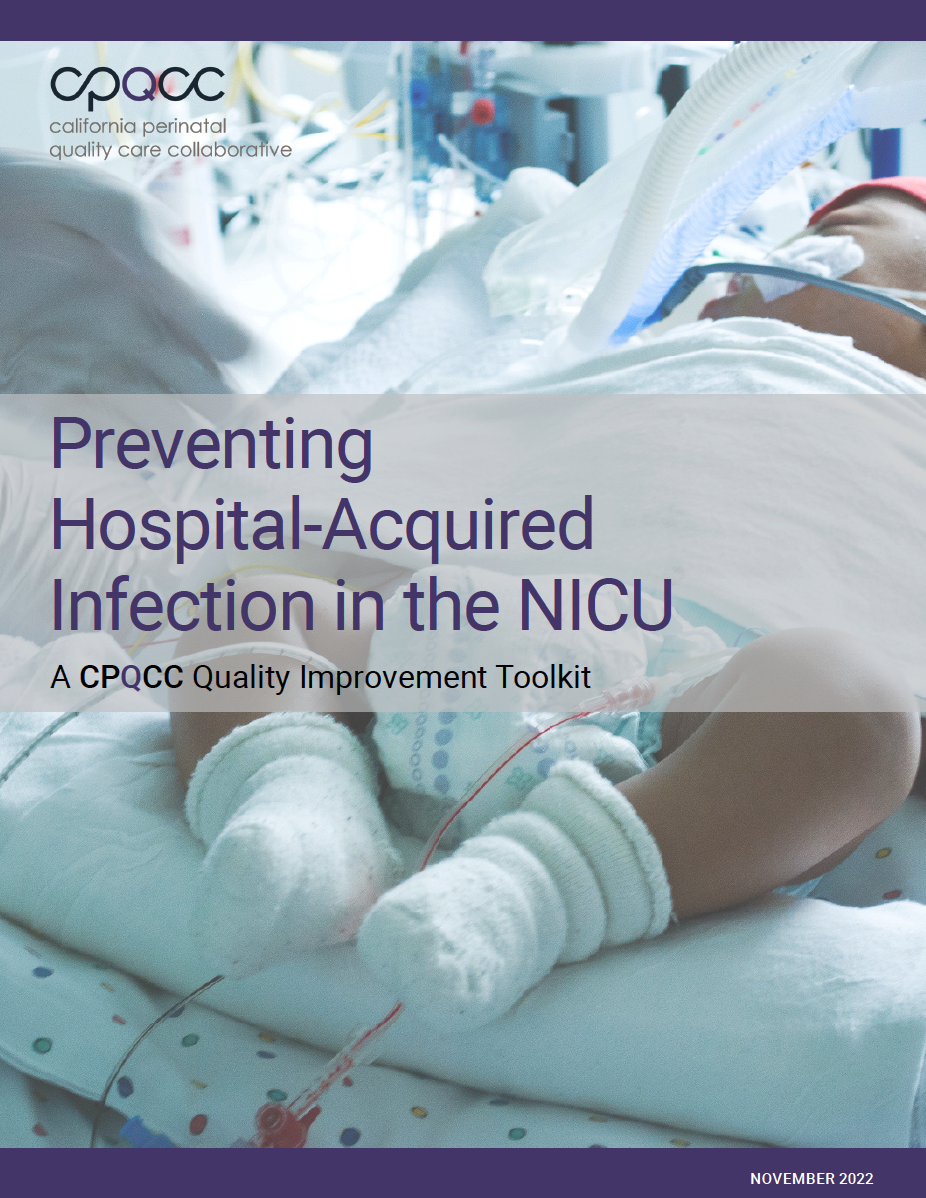
Over the past 20 years, through efforts of single and multi-center NICU quality improvement (QI) projects and collectively through state collaboratives, the rates of central line-associated blood stream infections (CLABSIs) and, subsequently, hospital-acquired infections (HAI), in the NICU have been reduced. Despite these improvements, HAI remains a persistent challenge in the NICU, resulting in increased length of stay, morbidity and mortality, and increased hospital costs. Very low birthweight (VLBW) infants hospitalized in the NICU are at an increased risk for HAI.
This 2022 revision of the original toolkit published in 2007 builds upon CLABSI prevention efforts and shifts the focus toward a broader approach to HAI prevention by encouraging the use of “hospital-acquired bacteremia” or “non-CLABSI bloodstream infection” incidence as an important and more global measurement of NICU quality. To that end, this toolkit addresses other potential sources of hospital-acquired bacteremia, such as the skin and gut, and delineates potentially better practices to address these areas. Along with CLABSI prevention efforts, this wider approach to HAI prevention is needed to protect the youngest and smallest NICU patients.
Several potentially best practices are explored within this toolkit under five categories, including:
- Hand Hygiene
- NICU Quality Improvement and Culture
- General Principles of HAI Prevention
- Skin Considerations and HAI Prevention
- Antibiotic Stewardship/Multi-Drug Resistant Organisms (MDRO)
A central focus for the authors was to include tools, checklists, visual displays, and other resources that may enhance HAI prevention QI efforts.
Was this tool helpful? Take this 4 question survey.
